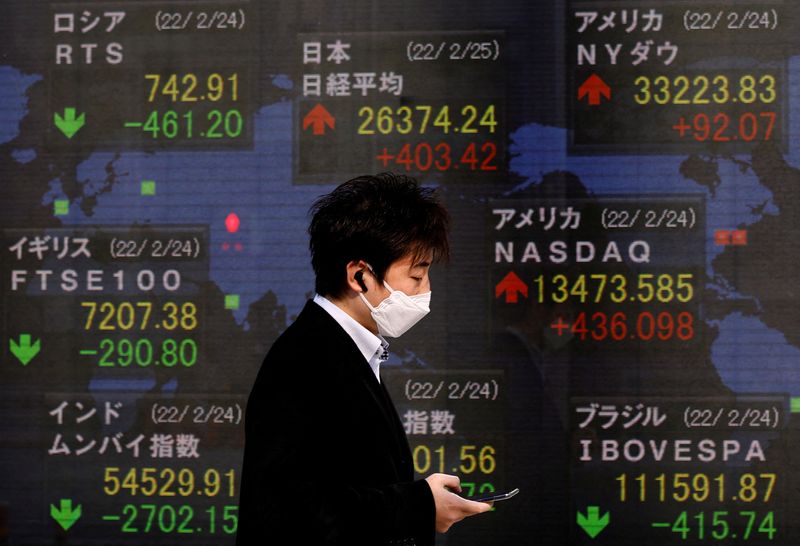(Reuters) - A look at the day ahead in Asian markets from Jamie McGeever
Economic data from Asia's two economic powerhouses kicks off the global trading day on Monday - a batch of July indicators from misfiring China, and Japan's Q2 GDP report.
We get the first insight into how China's COVID-hit economy started Q3, with July readings of industrial output, retail sales, house prices and urban investment. Economists are generally looking for recovery, albeit gradual.
Chinese stocks snapped a five-week losing streak on Friday to close the week up 0.8%, lifted by the feel-good factor on Wall Street and an easing of Sino-U.S. tensions over Taiwan.
Also on Friday, however, five U.S.-listed Chinese state-owned companies whose audits are under scrutiny by the U.S. securities regulator said they would voluntarily delist from the New York Stock Exchange.
Meanwhile, Japan's economy is expected to have bounced back strongly in the second quarter after contracting in the first, with economists forecasting quarterly growth of 0.6% and annualised expansion of 2.5%.
Japan's yen rose around 1% against the dollar last week - its third weekly rise in four. Could it break convincingly through the 130 per-dollar barrier this week?
The tone across Asia on Monday will also be set by the growing hope that U.S. inflation has peaked. This could further fuel the rally in risk assets, steepen the U.S. yield curve and weigh on the dollar.
Later on Monday, the U.S. Treasury releases its "TIC" data for June, which measures flows in and out of U.S. sovereign debt. In light of the recent political strains, China's demand will be closely watched.
Key developments that should provide more direction to markets on Monday:
Japan Q2 GDP estimate
China industrial output, retail sales, house prices, urban investment data (July)

New York Fed manufacturing index (August)
Fed's Christopher Waller speaks on banking and finance